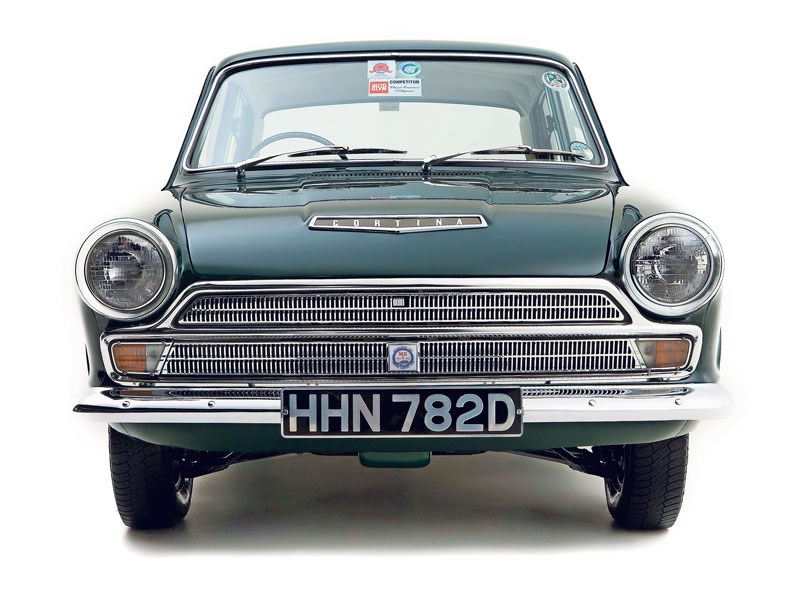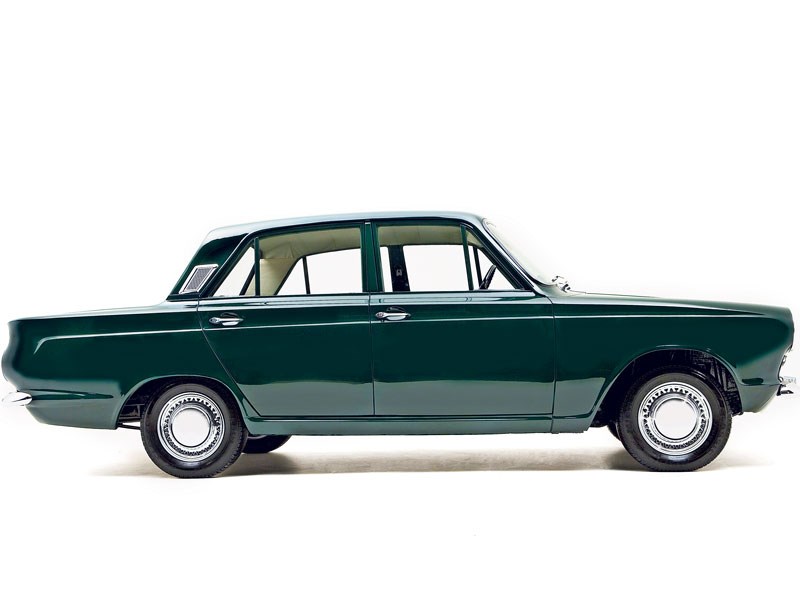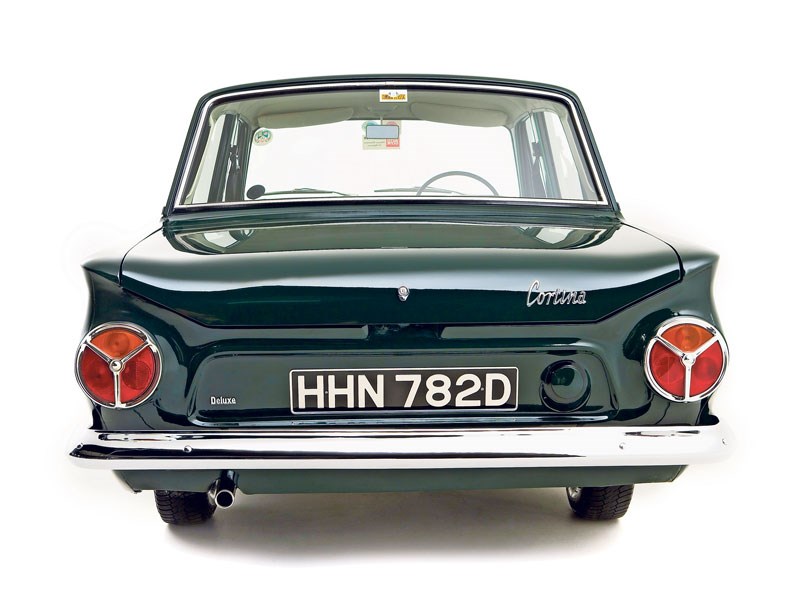It was the beginning of a famous line, but what is it like now?
Huge numbers of families and junior executives may have aspired to own the new Cortina back in 1962, but that was more than 50 years ago. The good news is that the MkI is a reliable and entertaining classic saloon thanks to Ford’s dedication to making the Cortina as modern as possible.
The standard cars aren’t terribly quick – the 1200 in particular feels underpowered – so you’ll probably find the 1500 more useful on a daily basis. What the engines do offer are smoothness and lively responses, which means that if you want to take long trips behind that spindly three-spoke steering wheel you’ll be able to keep up with modern traffic.
A slick gearchange allows you to row the Cortina along nicely and make the most of the fairly limited power on offer (just 60bhp in 1500 form). The rest of the controls are nicely weighted, too, and while the steering isn’t a paragon of accuracy – compared to rack and pinion systems anyway – it doesn’t affect your enjoyment. In fact, the Ford rides and handles remarkably well given the relatively low-tech underpinnings. Stopping power is adequate, even on early models with their all-drum set-up. Later front discs add extra bite and confidence,
The positives continue on the inside, too. There’s plenty of space for passengers, while the driver benefits from a good driving position with all the major controls perfectly placed. A dearth of standard equipment can make for a slightly austere feel, but it’s no worse than any other comparable car of the period. Facelifted versions added the innovative ‘Airflow’ fresh air ventilation system that was a real selling point – no, really!
A further plus is the roomy boot, making the Cortina perfect for that family touring holiday – it’s easy to see why so many buyers couldn’t wait to get their hands on one when it was new.
VITAL STATISTICS
Ford Cortina 1500
Engine 1498cc/4-cyl/OHV
Power (bhp@rpm) 60bhp@4600rpm
Torque (lb ft@rpm) 82lb ft@2300rpm
Top speed 85mph
0-60mph 21sec
Consumption 32mpg
Gearbox 4-spd manual
WHAT TO LOOK FOR
BODYWORK & CHASSIS
The MkI’s bodyshell contains a host of rust traps, so be cautious when examining a potential purchase. Obvious areas include the front wings – both inner and outer, especially around the headlights – and the sills. Wheelarches and valances also suffer and take a close look at the door and windscreen pillars. Check carefully for a rotten bulkhead above the pedals, and corroded rear panels where the bumper irons attach. Door bottoms and edges of the bonnet and boot lid. Watch for bubbling around the chrome styling strips on ‘Super’ models and the ‘Di-Noc’ trim on estates, as rust can be festering away underneath.
Look for rot in the chassis legs and outriggers, the jacking points, the floor panels, and spare wheel well.
A particular area to check is where the chassis passes over the rear axle, and the rear legs on estate models. The petrol tank rusts merrily – the top of the tank forms part of the boot floor so check for damage caused by heavy loads. Replacement body panels are available but quality can vary so speak to the club for advice.
ENGINE
A combination of simplicity and plenty of space under the bonnet means major engine work isn’t a chore, so it’s a case of watching for excessive blue exhaust smoke and rumbles/knocks that signify an impending re-build. Clattery valve gear and timing chains are common though easy to sort, as are oil or coolant leaks. The ‘Kent’ units are fundamentally strong and fitting new cylinder liners can rescue a badly worn one, but secondhand engines are relatively cheap and plentiful. A fair few have had the underpowered base 1200cc unit replaced by 1500s – it’s not a problem, as long as you’re aware of what you’re buying.
ELECTRICS
While some trim parts are scarce – damaged centre consoles on GTs are a particular problem – Aldridge Trimming can supply new door cards and headlinings. Extensive re-trimming will come at a price, so avoid anything too neglected. Apart from aged or bodged wiring there are few electrical problems, but wiper motors can be a weak point.
RUNNING GEAR
The all-synchromesh four-speed manual gearbox (column shift, wand-type lever, or remote shifter depending on age and model) is durable, but listen out for the whine of worn layshaft bearings in lower gears. Jumping out of gear is common and will mean a re-build or replacement is on the cards, while a buzzing gearlever is more of an annoyance and often caused by worn linkage bushes. The Borg Warner 35 automatic arrived in late 1963 and should be smooth and quiet in operation.
BRAKES
Play in the steering box or worn joints will lead to vague steering, while stiffness is likely to be caused by seized top strut bearings. The ball race within the rubber mount wears quickly, too, so check for play. There’s little else to worry about other than sagging rear leaf springs, noisy rear wheel bearings – these are fiddly to fix – and neglected braking systems. The latter is easy to refurbish, though, whether the early all-drum or disc/drum set-up of later models. It’s also sensible to check for rot around the spring hangers and in the front strut towers – neither is difficult to fix, but costs can escalate if the rust has been allowed to spread.
INTERIOR
Sumptous interior boasted soft fabric and acres of space
OUR VERDICT
Sharp styling and refreshing simplicity are key to the Cortina’s appeal. As a starter classic, it is hard to resist, being spacious, practical, and pleasant to drive. It’s DIY-friendly, too, with good parts availability, but be wary of rotten examples that require extensive restoration.


